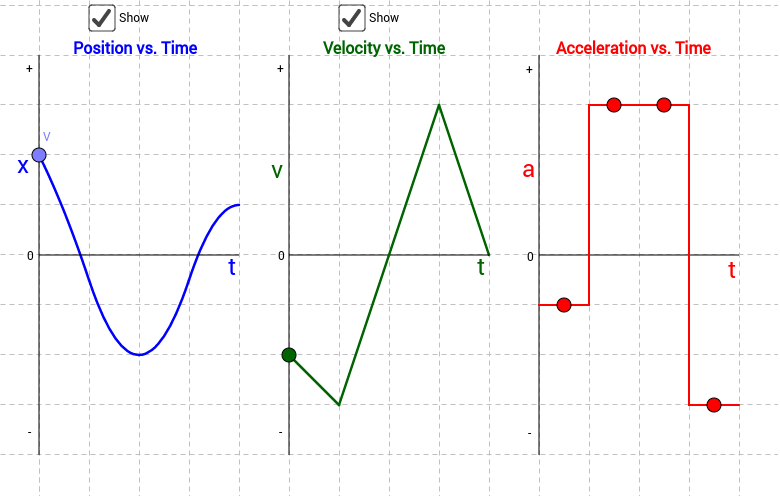

Is it realistic to draw any position graph that starts at rest without some curve in it? Why might we be able to neglect the curve in some scenarios? Ask if the place that they take as zero affects the graph. The part where it is going backwards would have a negative slope. The parts where the car was going forward should have a positive slope. time graph.Įach leg of the journey should be a straight line with a different slope. Get the students to coach you to draw a position vs.Take the recorded times and the change in position and put them together.If you can find a remote control car, have one student record times as you send the car forward along the stick, then backwards, then forward again with a constant velocity.Help students learn what different graphs of displacement vs. In terms of a physical situation in the real world, these quantities will take on a specific significance, as we will see below. The letter b is the y-intercept which is the point at which the line crosses the vertical, y-axis. Here m is the slope, defined as the rise divided by the run (as seen in the figure) of the straight line. As in Figure 2.10, a straight-line graph has the general form y = m x + b y = m x + b. In algebra, you would have referred to the horizontal axis as the x-axis and the vertical axis as the y-axis. When two physical quantities are plotted against each other, the horizontal axis is usually considered the independent variable, and the vertical axis is the dependent variable.

Graphs in this text have perpendicular axes, one horizontal and the other vertical. In this section, we will investigate kinematics by analyzing graphs of position over time. Graphs not only contain numerical information, they also reveal relationships between physical quantities. Once the students have looked at and analyzed the graph, see if they can describe different scenarios in which the lines would be straight instead of curved? Where the lines would be discontinuous? Graphing Position as a Function of TimeĪ graph, like a picture, is worth a thousand words. Is the line straight? Is it curved? Does it change direction? What can they tell by looking at the graph? Have students help you complete the graph. Where would they put their zero? What is the positive direction, and what is the negative direction? Have a student draw a picture of the scenario on the board. It goes up 150 ft, stops, and then falls back to the earth. Describe a scenario, for example, in which you launch a water rocket into the air.


 0 kommentar(er)
0 kommentar(er)
